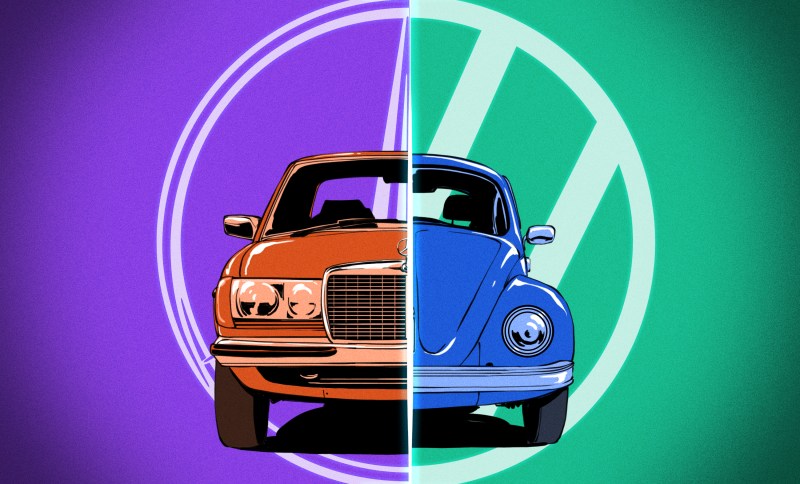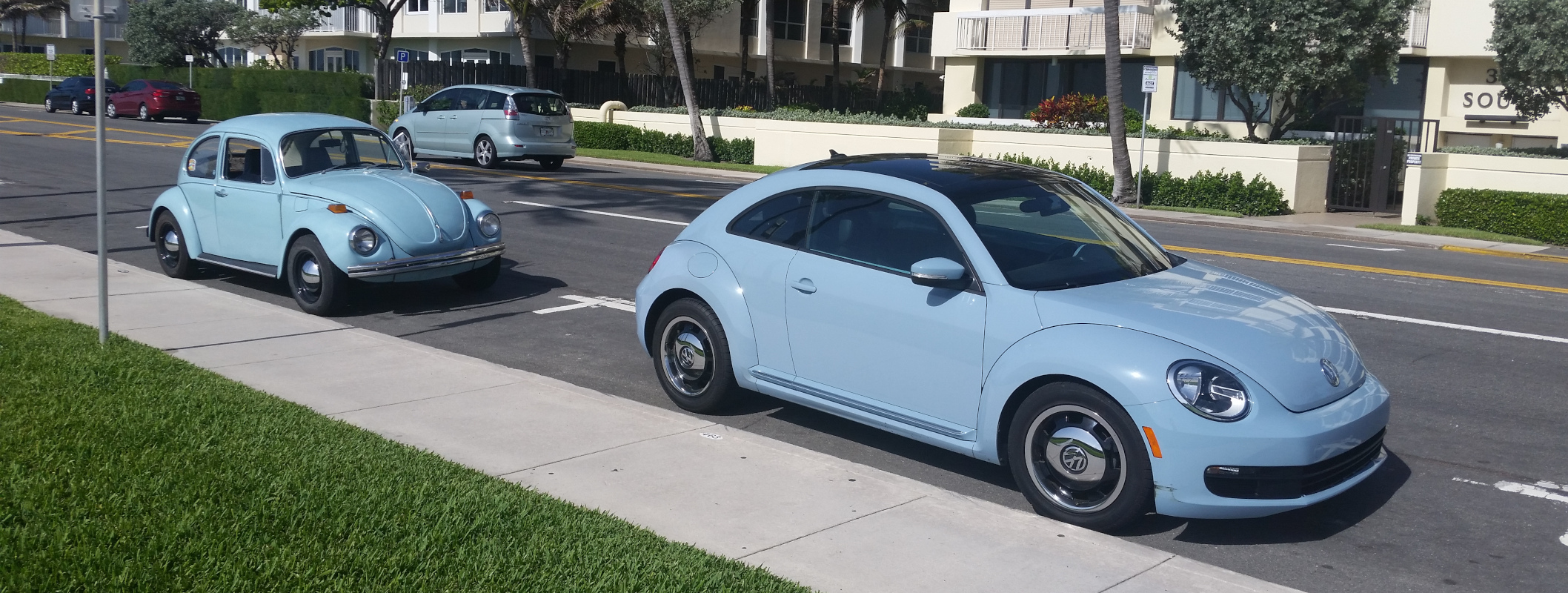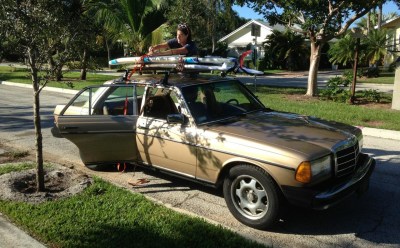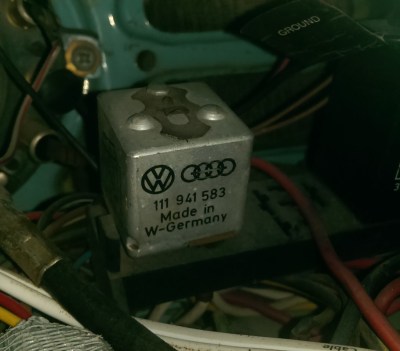
As a classic car enthusiast, my passion revolves around cars with a Made in West Germany stamp somewhere on them, partially because that phrase generally implied a reputation for mechanical honesty and engineering sanity. Air-cooled Volkswagens are my favorites, and in fact I wrote about these, and my own ’72 Super Beetle, almost a decade ago. The platform is incredibly versatile and hackable, not to mention inexpensive and repairable thanks to its design as a practical, affordable car originally meant for German families in the post-war era and which eventually spread worldwide. My other soft-spot is a car that might seem almost diametrically opposed to early VWs in its design philosophy: the Mercedes 300D. While it was a luxury vehicle, expensive and overbuilt in comparison to classic Volkswagens, the engineers’ design choices ultimately earned it a reputation as one of the most reliable cars ever made.
As much as I appreciate these classics, though, there’s almost nothing that could compel me to purchase a modern vehicle from either of these brands. The core reason is that both have essentially abandoned the design philosophies that made them famous in the first place. And while it’s no longer possible to buy anything stamped Made in West Germany for obvious reasons, even a modern car with a VIN starting with a W doesn’t carry that same weight anymore. It more likely marks a vehicle destined for a lease term rather than one meant to be repaired and driven for decades, like my Beetle or my 300D.
Punch Buggy Blue

Starting with the downfall of Volkswagen, whose Beetle is perhaps the most iconic car ever made, their original stated design intent was to make something affordable and easily repairable with simple tools. The vehicles that came out of this era, including the Beetle, Bus, and Karmann Ghia, omitted many parts we’d think were absolutely essential on a modern car such as a radiator, air conditioner, ABS brakes, a computer, or safety features of any sort. But in exchange the vehicles are easily wrenched on for a very low cost.
For example, removing the valve covers only requires a flat screwdriver and takes about five seconds, and completing a valve adjustment from that point only requires a 13 mm wrench and maybe an additional half hour. The engines can famously be removed in a similar amount of time, and the entire bodies can be lifted off the chassis without much more effort. And some earlier models of Beetle will run just fine even without a battery, assuming you can get a push. As a result of cost and simplicity the Beetle and the other vehicles based on it were incredibly popular for almost an entire century and drove VW to worldwide fame.
This design philosophy didn’t survive the 80s and 90s, however, and this era saw VW abandon nearly everything that made it successful in the first place. Attempting any of the maintenance procedures listed above on a modern Jetta or Golf will have one scratching one’s head, wondering if there’s anything left of the soul of the Volkswagen from the 50s and 60s. Things like having to remove the bumper and grille to change a headlight assembly or removing the intake manifold to change a thermostat are commonplace now. They’ve also abandoned their low-cost roots as well, with their new retro-styled Bus many multiples of even the inflation-adjusted price of a Bus from the 1960s, well beyond what modern safety standards and technology would have added to the cost of the vehicle alone. Let’s also not forget that even when completely ignoring emissions standards, modern VWs have still remained overpriced and difficult to repair.

VW Is Not Alone
The story of Mercedes ends up in almost exactly the same place but from a completely opposite starting point. Mercedes of the 60s and 70s was known for building mostly indestructible tanks for those with means who wanted to feel like they were riding in the peak of luxury. And that’s what Mercedes mostly delivered: leather seats, power windows, climate control, a comfortable ride, and in a package that would easily go hundreds of thousands of miles with basic maintenance. In the case of the W123 platform, this number often extended to a million miles, a number absolutely unheard of for modern vehicles.
This is the platform my 1984 300D was based on, and mine was well over 300,000 miles before we eventually parted ways. Mercedes of this era also made some ultra-luxury vehicles that could be argued to be the ancestors of modern Mercedes-Maybach like the Mercedes 600, a car with all of the power electronics replaced with hydraulics like the windows, power reclining rear seat, and automatic trunk.

While the Mercedes 600 isn’t exactly known for being a hobbyist car nowadays, the W123s certainly are. My 300D was simple by modern Mercedes standards with a mechanical fuel injected diesel engine that was excessively overbuilt. The mechanical climate control systems made out of springs, plastic, and hope might not be working anymore but I’d be truly surprised if the engine from this car isn’t still running today.
Even plenty of gas-powered Mercedes of that era are wrenchable (as long as you bought one from before Chrysler poisoned the company) and also deliver the luxury that Mercedes was known for and is still coasting on. And this ability to repair or work on a car at a minimum of cost didn’t mean Mercedes sacrificed luxury, either. These cars were known for comfort as well as reliability, something rarely combined in modern cars.
Indeed, like Volkswagen, it seems as though a modern Mercedes will make it just as far as the end of the first lease before it turns into an expensive maintenance nightmare. Mercedes at least has the excuse that it never recovered from infecting itself with Chrysler in the 90s, but Volkswagen has no corporate baggage as severe, instead making a conscious choice to regress towards the mean without the anchor of a lackluster American brand tied around its neck. But a few other other less-obvious things have happened that have crushed the souls of my favorite vintage auto makers as well.
Toyota
Japanese automakers disrupted everything in the 70s and 80s with cars that had everything Volkswagen used to be: simple, inexpensive, repairable, and arguably even more reliable. And, with the advent of Lexus in the 80s and their first model, the LS400, they showed that they could master the Mercedes traits of bulletproof luxury as well. They didn’t need nostalgia or marketing mythology; they just quietly built what Volkswagen and Mercedes once promised, and Volkswagen, Mercedes, and almost every other legacy automaker at the time were simply unable to compete on any of these terms. Many people will blame increasing safety and emissions requirements on the changes seen in the last three decades, but fail to account for the fact that Japanese brands had these same requirements but were able to succeed despite them.
Marketing

Without being able to build reliable vehicles at a competitive price to Toyota, or Honda, or others, these companies turned to their marketing departments and away from their engineers. Many car makers, not just Mercedes and VW, chase gadgetry and features today rather than any underlying engineering principles. They also hope to sell buyers on a lifestyle rather than on the vehicle itself. With Mercedes it’s the image of luxury rather than luxury itself, and for Volkswagen especially it’s often nostalgia rather than repairability or reliability.
This isn’t limited to car companies, either. The 80s and 90s also ushered in a more general time of prioritizing stock holders and quarterly earnings rather than customers, long-term thinking, and quality. Companies like Boeing, GE, Craftsman, Sony, and Nokia all have fallen to victim to the short-term trend at the expense of what once made them great.
Designing for Assembly Rather than Repair
And, if customers are only spending money on a lease term it doesn’t really matter if the cars last longer than that. So, it follows that the easiest way to trim costs when not designing for longevity is to design in ways that minimize assembly cost rather than costs of ownership. That’s partially how we get the classic “remove the bumper to replace the headlight” predicament of many modern vehicles: these cars are designed to please robots on the assembly line, not humans with wrenches.
Dealerships
The way that we’ve structured car buying as a society bears some of this burden as well. Dealerships, especially in North America, are protected by law and skew the car ownership experience significantly, generally to the detriment of car owners. Without these legal protections the dealership model would effectively disappear overnight, and their lobbying groups have fought tooth-and-nail to stop newer companies from shipping cars directly to owners. Not only do dealerships drive up the cost of purchasing a vehicle compared to if it were legally possible to buy direct from a manufacturer, they often make the bulk of their profits on service. That means their incentives are also aligned so that the more unreliable and complex vehicles become, the more the dealerships will benefit and entrench themselves further. This wasn’t as true when VW and Mercedes were making the vehicles that made them famous, but has slowly eroded what made these classics possible in the modern world.
Hope? Probably Not.
There’s no sign that any of these trends are slowing down, and to me it seems to be part of a broader trend that others like [Maya] have pointed out that goes beyond cars. And it’s a shame too as there’s a brand new frontier of electric vehicles that could (in theory) bring us back to a world where we could have reliable, repairable vehicles again. EVs are simpler machines at heart, and they could be the perfect platform for open-source software, accessible schematics, and owner repair. But manufacturers and dealers aren’t incentivized to build anything like the Volkswagens or Mercedes of old, electric or otherwise, even though they easily could. I also won’t hold my breath hoping for [Jeff Bezos] to save us, either, but I’d be happy to be proven wrong.

And I also don’t fault anyone for appreciating these legacy brands. I’ve picked on VW and Merc here because I’ve owned them and appreciate them too, or at least what they used to represent. The problem is that somewhere along the way, loyalty to engineering and design ideals got replaced by loyalty to the logo itself. If we really care about what made cars like the Beetle and 300D special in the first place, we should be demanding that the companies that built them live up to those values again, not making excuses when they don’t.
So for now, I’ll keep gravitating toward the vehicles that came closest to those ideals. Others at Hackaday have as well, notably [Lewin] and his Miata which certainly fits this bill. Although I don’t have my VW or Mercedes anymore, I currently have a ’19 Toyota pickup, largely designed in the early 2000s, which isn’t glamorous but it’s refreshingly honest by modern standards and is perhaps a last gasp from this company’s soul, as Toyota now risks following the same path that hollowed out Volkswagen and Mercedes: swapping durability and practicality for complexity, flashy features, and short-term profits. I was also gifted an old Buick with an engine I once heard described as “the time GM accidentally made a Toyota engine.” The rubber bits may be dry-rotting away, but it’s a perfect blend of my Beetle and my 300D because it’s cheap, comfortable, reliable, and fixable (and the climate control actually works). The only thing missing is that little stamp: Made in West Germany.
This articles is written by : Nermeen Nabil Khear Abdelmalak
All rights reserved to : USAGOLDMIES . www.usagoldmines.com
You can Enjoy surfing our website categories and read more content in many fields you may like .
Why USAGoldMines ?
USAGoldMines is a comprehensive website offering the latest in financial, crypto, and technical news. With specialized sections for each category, it provides readers with up-to-date market insights, investment trends, and technological advancements, making it a valuable resource for investors and enthusiasts in the fast-paced financial world.
